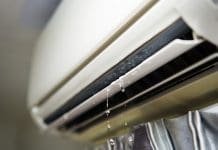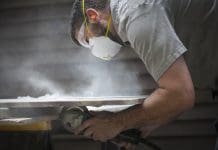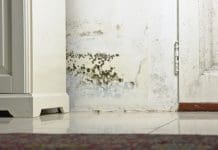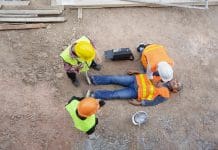Barry Crackett, Design Engineer at Brushtec, a leading manufacturer of brushes for industrial and municipal applications, considers the importance of keeping a clean building site, and some of the most effective measures to do so
With a construction project, you usually have to make a lot of mess before you can begin to see the fruits of your labour begin to take shape. Whatever the size of the site, you can expect to create a lot of waste, which cannot simply be swept beneath the rug. It isn’t just excess materials that needs to be dealt with; you need to ensure the time and effort is put into clearing away things like equipment and loose cables so that they do not encroach on your activities.
All of these aspects need careful management to ensure that your team can continue to work safely and efficiently on the rest of the project. Doing so will save you both time and money in the long run, and can also make your building site more environmentally friendly.
Of the 65,000 non-fatal construction accidents reported in 2014 and 2015, 23% of them were due to slips, trips, and falls according to recent figures from the Health and Safety Executive. A large number of these are caused by materials or tools being left out of place around work sites, which shows just how important maintaining an organised work area is to the safety of your personnel.
You may also think that the state of your site doesn’t really matter as long as you successfully complete construction and clean up afterwards. However, consider that a potential client for a future project could drive by and judge your firm as unprofessional, forming an unsavoury opinion of your firm from the mess. Think of your site as an audition for your next contract and you might soon change your mind.
Tidying is often considered a secondary activity that takes place once the work is done, but that shouldn’t be the case. There are a number of measures that you should make sure are upheld on your site so that you can reap the rewards of a clean construction area. Some of the most important of these are:
- Designating an area for rubbish and waste: This is something that you need to think about at an early stage when you are planning your site. Waste can’t usually be taken away from your location immediately, so you will need somewhere to put it until this is possible. Making sure that all of your team are aware of this area from the very beginning will help you to maintain a clear space from the outset of your project to the end. Consider hiring several skips or similar bins to dispose of waste, keeping in mind the need to divide waste into categories like landfill and recycling.
- Store building materials safely: If you are working on a project that will be ongoing, you will probably need to store your building materials onsite for a prolonged period of time. The way that you store them needs to be safe to avoid any chance of an accident — poorly stored materials can block access routes and potentially topple over, causing damage to property and injury to your team.
- Ask your team to tidy as they go: Encouraging your workers to tidy after they complete each job is a sure-fire way of making sure your site will remain clear and your team can remain as efficient as possible.
- Invest in innovative clean up solutions: You can make the clean-up job easier for your staff by providing them with the right tools. As a company that specialises in brushes for industrial clean-up solutions, this is an area that we here at Brushtec have a lot of experience in, and we can’t emphasise enough how important it is for construction professionals to have access to the right tools. Minimising the amount of contact time that construction professionals have with dirt and debris can save a lot of time and help them to avoid moving excess materials by hand.
- Make sure cables are out of the way: Trailing leads and cables are one of the worst offenders for causing trips. Ensure that they are positioned away from walkways, entrances, and exits to minimise their hazard to your staff. Encourage workers using portable equipment to know where the cable is at all times.
- Ensure that tools are put away after the job is finished: Avoid any potential mishaps with tools that aren’t needed by making sure they are stored straight after they are used.
Hopefully this article will help you discover how important it is to keep a clear building site as well as some of the many advantages that it can offer. You should also be able to implement some of the methods discussed to the benefit of your future construction projects.
Barry Crackett
Design Engineer
Brushtec





![[VIDEO]What to expect when you’re inspecting: Using DorTrak for fire door inspections](https://www.pbctoday.co.uk/news/wp-content/uploads/2025/02/maxresdefault-218x150.jpg)







